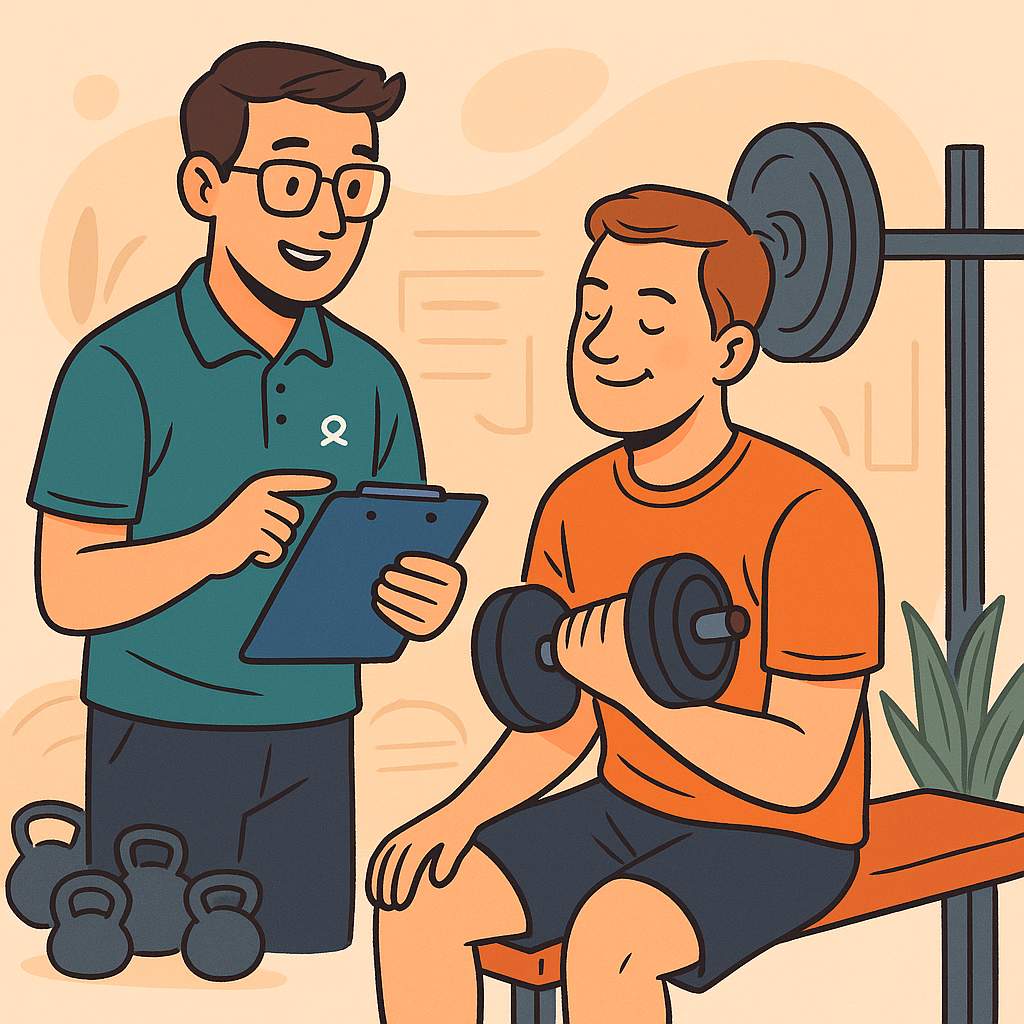Most of us naturally favour one side of our body—often the hand we write with, the leg we kick with, the side we reach with. Over time this dominant side tends to become stronger, more coordinated, or more relied upon, while the non-dominant side may lag behind.
That imbalance isn’t just a cosmetic or “odd detail” — it can have meaningful implications for posture, movement efficiency, injury risk and long-term health. Research has shown that differences between dominant and non-dominant limbs do exist in strength, balance and coordination. For example:
- A study found that athletes in asymmetric sports (those relying heavily on one side) often exhibited greater strength and balance on the dominant side compared with the non-dominant side. MDPI+1
- Another systematic review found that training the non-dominant side improves strength, change-of-direction speed, jumping ability and balance. Frontiers
- Research into single-leg power performance found meaningful differences between dominant and non-dominant legs, suggesting the non-dominant side lags in performance measures. ResearchGate
So yes — the non-dominant side matters.
What kinds of problems can be caused by ignoring it?
If the non-dominant side is weaker, less stable or less mobile, you might see things like:
- A persistent ache or soreness on the dominant side because it takes more load (because your non-dominant side isn’t pulling its weight).
- Reduced balance or coordination (if one leg is less stable it can affect gait, stairs, standing on one leg).
- Poorer posture or asymmetry (for example one shoulder may be higher, one hip may rotate) leading to muscle tension and strain.
- Slower recovery or higher risk of re-injury (if one side is weaker or less capable, the load gets redirected).
- Frustration: you feel like you’re doing “everything right” but you’re still not getting symmetrical strength or movement.
How an Exercise Physiologist (EP) can help
This is where a trained professional really adds value—especially for the non-dominant side. An EP brings structure, precision and progression. Here’s how they can guide you:
1. Assessment & baseline
An EP can measure where the asymmetries lie: strength testing, balance testing, gait and movement analysis. They’ll identify if the non-dominant side is significantly weaker, less stable, or moving differently.
2. Personalised plan
Based on your assessment, the EP will design unilateral (one-side) and bilateral (both sides) exercises that target the non-dominant side specifically. They’ll programme load, frequency and progression to bring that side up to speed.
3. Technique & support
You won’t just “do the exercise”—the EP ensures you’re performing the movement correctly, compensations are minimised, and that you’re engaging the correct muscles on the non-dominant side.
4. Integration into your goals
Whether your goal is sport performance, daily mobility, posture correction or injury prevention, this targeted work is integrated with your broader movement plan (including your dominant side and whole-body movement).
5. Monitoring & adaptation
Over time, the EP will reassess progress, adjust the plan as needed, and ensure that your non-dominant side is not left behind. They help you maintain motivation and keep tracking meaningful improvements.
What you could start doing right now
If you feel like your non-dominant side might be “holding you back”, here are a few simple steps:
- Choose one exercise you do routinely (e.g., bicep curls, single-leg squats, shoulder presses). In your next session, do one extra set (or a few extra reps) with your non-dominant side.
- Add a unilateral exercise each week (e.g., single-leg deadlift on your weaker leg, single-arm row on your weaker side).
- Make a note: “Does my left side feel different from my right?” Check posture in the mirror: are both shoulders even? Are both hips level? Do you favour one leg when standing?
- Book a movement screen with an EP or physiotherapist; ask “Could you check my dominant vs non-dominant side for me?”
Why this topic is worth your attention
While many fitness and physio posts focus on “core strength”, “injury prevention”, “posture”, there’s been far less emphasis on the non-dominant side. Because this topic sits just beneath the surface—most people don’t think “I need to train my weaker side” until they hit a barrier (an injury, plateau, asymmetry). By addressing it proactively you can gain a strong performance advantage, reduce risk, improve symmetry and possibly prevent future issues.
Final thought
Your body is designed for balance. Even if one side dominates your daily life, your non-dominant side has potential. When you bring it stronger, more mobile, more reliable—you’ll feel it in everyday tasks, in your workouts, in your posture and in your overall movement confidence.
At Soulitude Health, our team (including physiotherapists, exercise physiologists and movement specialists) pride ourselves on seeing the whole picture—not just the “pain spot”. If you’d like a movement check, or want to bring your non-dominant side into play so you truly move with balance and confidence, we’d love to help.
References
Heshmati S. et al. “Effects of Asymmetric and Symmetric Sport Load on Upper and Lower Extremity Strength and Balance: A Comparison Between the Dominant and Non-Dominant Side in Adolescent Female Athletes.” Sports, 2025. MDPI
Zhang Y. et al. “Effects of non-dominant side training on athletic performance: a systematic review.” Front Physiol., 2025. Frontiers
SciSport Performance. “Side-to-Side Asymmetries: Do They Actually Matter And What Can We Do About Them?” 2022. SciSport Performance
